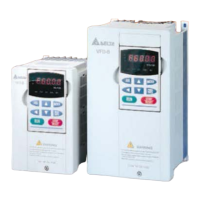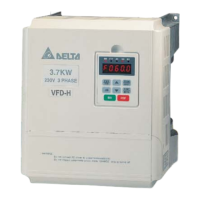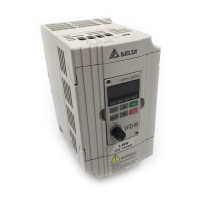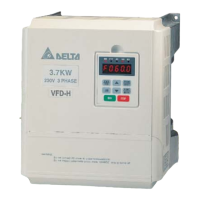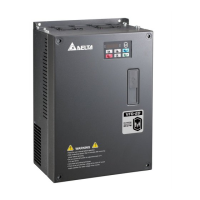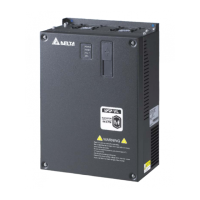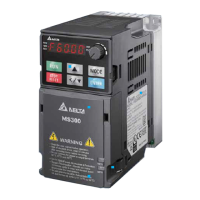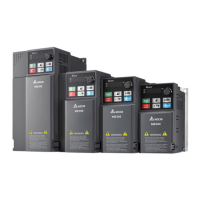Chapter 5 Parameters|VFD-B-P Series
Revision April 2009, SW V1.00 5-51
Example 5: Use of negative bias in noisy environment
In this example, a 1V negative bias is used. In noisy environments it is advantageous to use negative
bias to provide a noise margin (1V in this example).
Max. Output Freq.
60Hz
Pr.01-00
0Hz
0V
10V
Factory Settings
Pr.01-00=60Hz--Max. output Freq.
Pr.04-11=10.0% -- bias adjustment
Pr.04-12=1 -- bias polarity
Pr.04-13=100% -- pot. freq. gain
Pr.04-14=0 -- Rev. motion disable in negative bias
Negative
bias 6Hz
1V
54Hz
Example 6: Use of negative bias in noisy environment and gain adjustment to use full
potentiometer range
In this example, a negative bias is used to provide a noise margin. Also a potentiometer frequency
gain is used to allow the Maximum Output Frequency to be reached.
Max. Output Freq.
60Hz
Pr.01-00
0Hz
0V
10V
Factory Settings
Pr.01-00=60Hz--Max. output Freq.
Pr.04-11=10%--bias adjustment
Pr.04-12=1 -- bias polarity
Pr.04-13=111% -- pot. freq. gain
Pr.04-14=0 -- REV. motion disable in negative bias
Negative
bias 6.6Hz
1V
Bias
adjustment
Calculation of gain
Pr.04-13=(
10V
9V
)X100%=111%
Example 7: Use of 0-10V potentiometer signal to run motor in FWD and REV direction
In this example, the input is programmed to run a motor in both forward and reverse direction. The
motor will be idle when the potentiometer position is at mid-point of its scale. Using this example will
disable the external FWD and REV controls.
Max. Output Freq.
Pr.01-00
Factory Settings
Pr.01-00=60Hz--Max. output Freq.
Pr.04-11=50%--bias adjustment
Pr.04-12=1 -- bias polarity
Pr.04-13=200% -- pot. freq. gain
Pr.04-14=1 -- REV motion enable in negative bias
60Hz
30Hz
0Hz
0V
5V
10V
30Hz
60Hz
REV
FWD
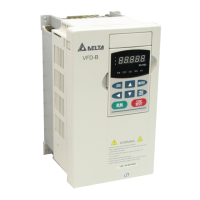
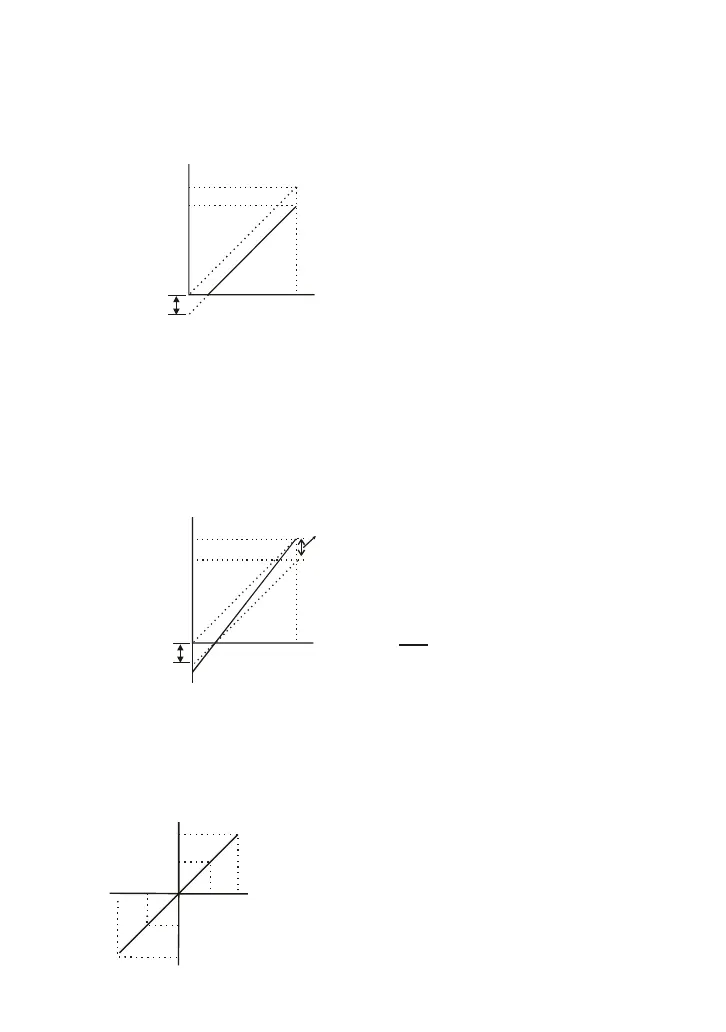